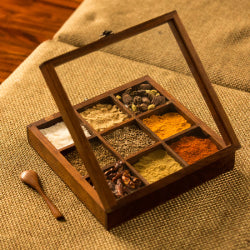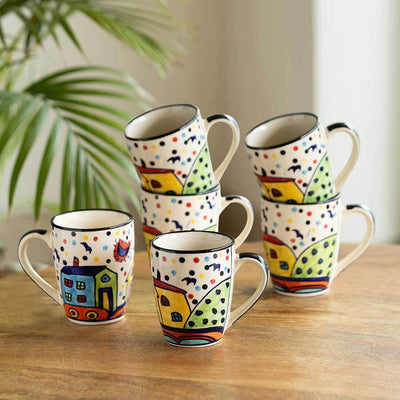Rajasthani Miniature Painting
Rajasthan has been one of the first states to explore the art of miniature painting in India. This Indian art form has a deep and strong connection with the art of Gujarat and Ajanta. In the early 15th century, this folk art began its journey of establishment in the Marwar region as a textual illustration of the Jain Kalp Sutras.
Miniature painting, also known as liming, is a small piece of work with high details. When looked closely, they are phenomenal, they present a story with intricate details. It is time-consuming and labour-intensive work which is often made on materials such as paper, wood, marble, cloth, and palm leaves.

The Jainism religion inspired the movement of Indian miniature painting art with western influence. Jain sutras were translated into beautiful illustrations using this tremendous artwork. After the Mughal influence on this art form, a lot of artisans migrated to other princely regions. After which, the Rajasthani miniature painting was introduced in the 17th-18th century.
Rajasthan miniature paintings - Reflection of Indian cultural
Rajasthan is a hub for folk art. It is famous for its music, dance, theatre, craft. Paintings and culture. The Indian miniature painting is one of the folk art that Indians take pride in since it resembles Indian cultural heritage. The Rajasthani painting art has been quite popular. It has been in existence for the longest time, and The famous Rajput painting incorporates a mixture of Indian tradition along with western influence.

While the Mughal miniature painting depicts the royal life, Rajasthani artwork focused on the representation of the love story of Lord Krishna, the story of Ramayana and Mahabharat. There were numerous numbers of schools established for Rajasthani miniature painting art in the area, Malwa, Mewar, Amber, etc. The Boondi School of Painting is one of the famous Rajasthan-based schools known for its exclusive style of miniature paintings.
Beautiful Miniature Painting Styles of Rajasthan
There are various magical miniature paintings styles of Rajasthan that are used to create a magnificent piece of artwork. Each of them has its own unique characteristics and technique.
- Kishangarh Style: This style of painting was born in the 18th century in the Kishangarh school of painting in the Kishangarh state. Even though the school lasted for a shorter duration, it developed a much more clear and refined style. It was known for the amount of precision done in the physical features of men and women. The facial features were represented with utmost grace and elegance, for example, long finers, long neck, deep almond-shaped eyes, and thin lips. The school also introduced the Bani Thai style of painting, also referred to as India’s Mona Lisa.
- Pahari Style: Developed in the Himalayan state of India, the Pahari style is composed of two contrasting schools, Kangra and Basohli. In the Kangra based style of painting, soft and less intense colours are used, lines are more graceful and refined, and the portrayal of landscape and perspective is quite realistic. On the other hand, the Basohli school’s style uses monochrome colours and bold lines.
- Deccani Style: Deccani style has been in practice from the 16th-19th century in the region of Bijapur, Golkanda, Ahmednagar, and Hyderabad. Earlier this style was independent of Mughal influence. This art form was a representation of Islamic painting along with Turkish, Iranian, and European influence. Paintings are done with this style focused on text illumination and creative decoration of Holy Quaran and the Surahs. Later, the Mughal influence was also seen playing a role in the Deccani style.
- Bikaner Style: Bikaner is situated in the northern region of Rajasthan. This style prominently depicts the Mughal features and elements compared to any other schools or Rajashtan. This is because a lot of Mughals visited and were employed in Bikaner. While a lot of critics termed it as a Mughal style, the Bikaner style is distinct and unique because it indulges the Rajput culture in its paintings.
- Jodhpur Style: Jodhpur is the second-largest city of Rajasthan and is also known as the kingdom of Marwa. Jodhpur style is the primary style of Marwar school. It is less influenced by Mughals and therefore has its own properties and features. This style is evident in paintings of Dhola-Maru, Gita-Govidna, and hunting scenes of animals. The best examples of this style of painting are present in the Baroda Museum. During the reign of Man Singh, the jodhpur style was shaped. Bright colours such as yellow, green, and blue were used to represent scenes such as spiral clouds, men having drinks, and women wearing skirts.

The practice of Rajasthani miniature painting still continues today. The passion for this folk art painting is still alive in the young blood of this world. Even though nowadays artists copy original artwork, people across the world are fond of this art form and therefore experts of this particular art are optimistic about the future of miniature painting, not only in India but across the world.

If you are a fan of Indian heritage, culture, and traditional folk art, then you definitely have to check out Exclusivelane’s products. At Exculsivelane you would find handicraft products made by rural artisans from across India. These products are available to you at one place at the most affordable price. Check out these few of the amazing collections, Madhubani art home decor, warli tales, and classic showpieces. So follow the ancient Indian tradition in the contemporary world.






Leave a comment